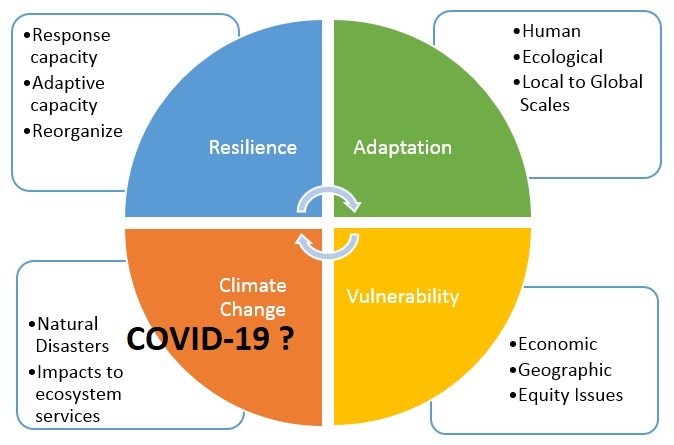Resilience in the Age of COVID-19

In our field, the term “resiliency” is typically thought of as resiliency to climate change . However, economic resiliency can also be resiliency to any sort of disaster – economic, human- caused, or “natural”. Economic resiliency or an economic resiliency study (sometimes called a vulnerability assessment) involves taking a good hard look at your community or your company, its strengths and weaknesses, and the connections between its various parts. If one part of the system breaks down, what are the impacts of that on the larger system? If one component is particularly vulnerable to an outside threat, are there alternatives if (when?) disaster strikes?
COVID 19 is making these vulnerabilities abundantly clear. Although vulnerability to climate change and vulnerability to a pandemic are different threats, , they involve some of the same basic questions. A closer look actually reveals some connections between the two seemingly different issues.
For example, let’s look at why the United States has had such a difficult time rolling out adequate testing. Yes, the capacity is there, as the federal government has said, but the theoretical capacity is different from the actual ability to complete the entire sequence of events from start to finish. It actually is a good case study that illustrates the connections between public health, supply chains, and climate change.
Let’s start by looking at the chain of events that has to take place in order to carry out a successful testing regime. Yes, we need to have a lot of tests available -and we need to have a lot of medical personnel able to administer those tests. Most tests are administered via a swab that is inserted in the patient’s nose to where the nasal passage intersects the back of the throat, meaning we need to have an adequate number of specialized swabs available. After the specimen is obtained, the swab then needs to be transported in sterile saline to a lab for analysis. Once at the lab, there needs to be an adequate amount of materials to run the analysis, including chemicals, machinery, and people. Only then can the results be made available. Looking at the chain of events and the things needed for each event to occur can reveal a lot about the vulnerability of a system. A chain is only as strong as its weakest link, as the maxim goes.
Remember Hurricane Maria? Hurricane Maria savaged Puerto Rico in 2019. It turns out that most of our country’s manufacturing of saline and saline bags is located on the island. The testing swabs mentioned in the previous paragraph need to be stored in saline in order to be transferred to a lab for testing. While health economists highlighted this weakness in the medical supply chain during the flu season of 2018, it was not adequately addressed.
This example underscores the idea that analyzing vulnerability to an unexpected event – whether to a hurricane or a pandemic – follows the same formula: Vulnerability = exposure times probability times impact. It also highlights the fact that vulnerability to one disaster (hurricanes) can exacerbate vulnerability to another ( a pandemic).That vulnerability can have serious economic implications, as we are finding.
Our next blog post will be on economic vulnerability to COVID-19, and the way communities can build resilience.